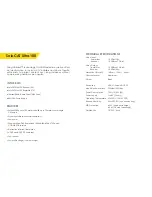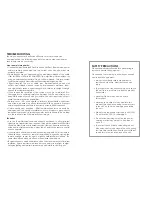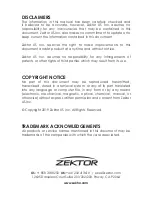
TROUBLESHOOTING
Should you encounter installation difficulties or issues with device
communication, the following checklist of common issues and causes
should help resolve your issues.
No or poor picture quality:
• Connected and powered? Double check all HDMI, Ethernet and power
cables are firmly connected into the correct ports and all devices are
correctly powered.
• Cable length? Are you approaching the maximum distance of the cable
(70m for 1080p or 40m for 4K UltraHD)? If so, adjust the picture quality or try
using an additional extender kit to go further distance. Cables bundled
together may cause cross talk and further degrade signal quality.
• Signal strength? The use of cable joins, stranded patch panels, wall
outlets and stranded patch leads as interconnects between them,
can significantly reduce signal strength. Use solid core straight through
connections wherever possible.
• If you reduce the resolution of the source do you get a picture? If so,
this suggests a conflicting resolution between source and display or a
bandwidth capacity issue with your cable. Check all inputs and outputs
share the same resolution capabilities.
• Picture ‘snow’ / HD ‘noise’ signifies a failure to fully establish a signal and
can often be caused by poorly terminated RJ45 connectors or excess
cable lengths. Ensure your cable is correctly wired to 568B standards.
• Cable quality and condition - HDMI cable/connectors can easily be
damaged and the quality of material can vary, Always use good quality
leads and cables and try swapping cables that are known to be working
into the solution to see if this improves your image.
IR control:
• Are the IR emitters and receivers correctly positioned to allow infrared
signals to be transmitted and received through the extender kit? Emitters
should be fixed firmly over infrared sensors of sources. Receivers should be
attached to displays ensuring a clear line of sight to the remote control
used to operate.
• Is your remote control powered and sending a signal? As IR is invisible to
the naked eye, check your remote is transmitting a signal by viewing the
remote handset sensor thought a digital camera/camera phone. The
sensor should flash when a button on the handset is held down.
• IR signal dropout can be experienced due to exterior emissions of infrared
radiation. Ensure emitters and receivers are away from direct sunlight.
Halogen lighting and plasma screens may also interfere with IR signal.
SAFETY PRECAUTIONS
Please read all instructions before attempting to
install or operate this equipment.
Please keep the following in mind as you unpack
and install this equipment:
• Always follow basic safety precautions to
reduce the risk of fire, electrical shock and
injury.
• To prevent fire or shock hazard, do not expose
the unit to rain, moisture or install this product
near water.
• Never spill liquid of any kind on or into
this product.
• Never push an object of any kind into this
product through any openings or empty slots
in the unit, as you may damage parts inside
the unit.
• Use only the supplied power supply unit (PSU).
Do not use the PSU if it is damaged.
• Do not allow anything to rest on the power
cabling or allow any weight to be placed
upon it.
• To protect the unit from overheating, do not
block any vents or openings in the unit housing
that provide ventilation and allow for sufficient
space for air to circulate around the unit.























